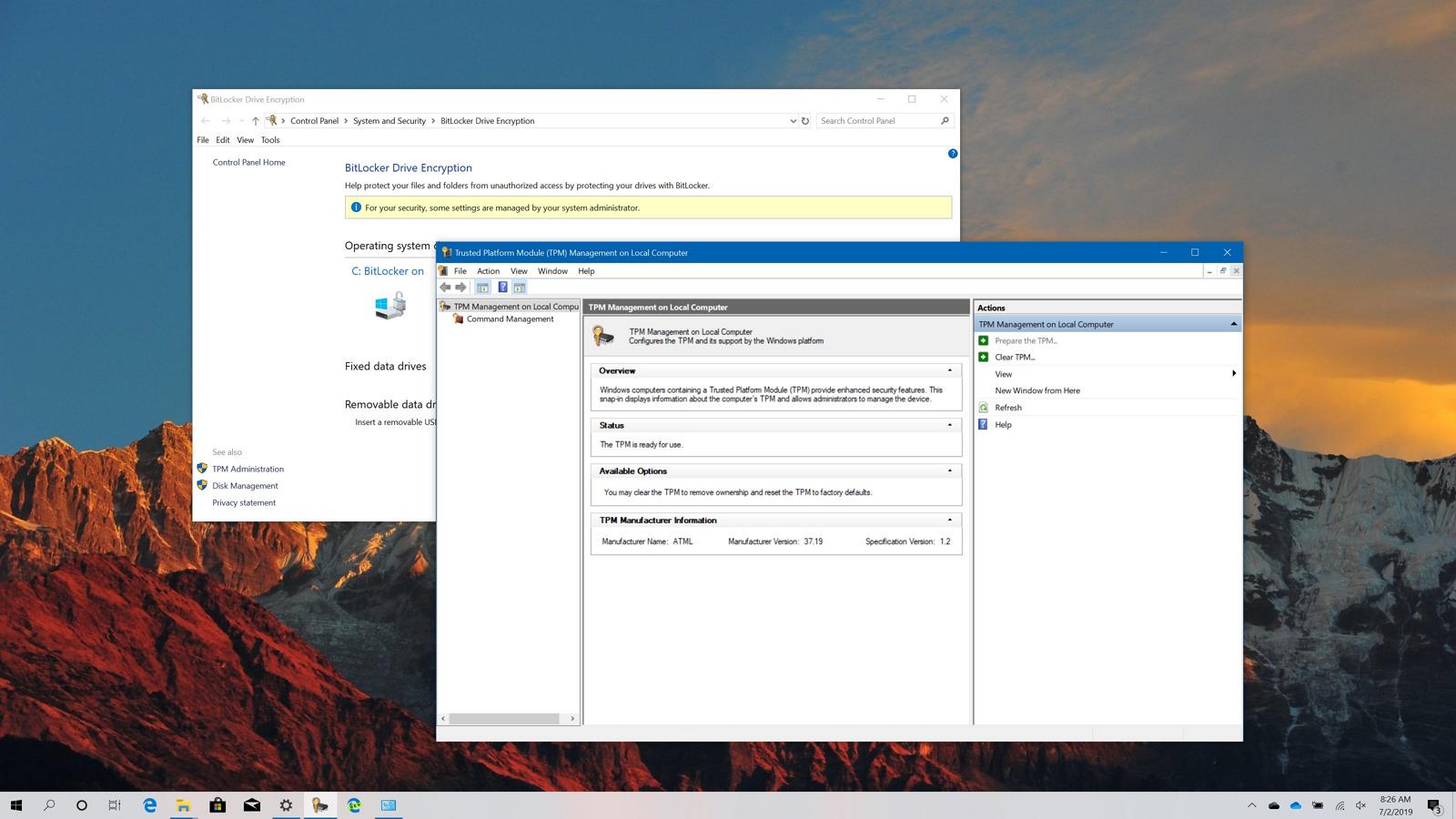In Windows 10, a Trusted Platform Module (TPM) is a hardware component that is typically (though not always) built into the motherboard and provides a safe place to store and safeguard the encryption keys when the hard drive is encrypted using BitLocker or another feature.
TPM versions 1.2, 2.0, or above are now found in the majority of computers, however this isn’t always the case. In many instances, the chip is present but disabled in the motherboard’s firmware.
Update June 25, 2021: A TPM 2.0 chip must be present and enabled with Windows 11 due to changes in system requirements. Additionally, you must have a device that has Secure Boot enabled. Windows 11 cannot be installed on your machine if either of these security features is absent or turned off. Although these instructions assist you in determining whether the security module is present, you may also access the motherboard’s firmware and enable both security features (if available) by using the BIOS/UEFI technique. If not, a different device with the updated OS will be required.
This post will teach you how to check if your computer has a TPM chip so you can use Windows 10 features like BitLocker.
-
How to check TPM chip using Manager
-
How to check TPM chip using Settings
-
How to check TPM chip using BIOS/UEFI
How to check TPM chip using Manager
To confirm that your device contains a TPM chip, use the Trusted Platform Module Manager console and follow these steps:
LaunchStart.
Look up fortpm.mscand. To access the Trusted Platform Module (TPM) Management tool, pick the top result.
Module Management for a Trusted Platform
You will see the hardware details and its condition if the device has a TPM chip. Otherwise, if it says “Compatible TPM cannot be found,” either your computer’s Trusted Platform Module isn’t compatible or the chip is disabled in the BIOS or UEFI.
How to check TPM chip using Settings
To verify whether your computer has a TPM chip installed, follow these steps in the Settings app:
Open the settings.
On Update & Security, click.
On Device Encryption, click.
Settings for Device Encryption in Windows 10
You can utilize BitLocker on your device if the Device encryption option is enabled and your device contains a hardware TPM chip.
This function is only available if your device has a Trusted Platform Module version 2 chip with support for Modern Standby, however you can tell if your computer has a TPM chip by checking to see if the Settings app contains the Device encryption option.
How to check TPM chip using BIOS/UEFI
It’s possible that your machine has a Trusted Platform Module turned off. The procedures for verifying whether your laptop or desktop has a TPM silicon will vary based on whether it is running the Unified Extensible Firmware Interface (UEFI) or Basic Input Output System (BIOS). (For more detailed information, visit the manufacturer’s support website.)
Checking TPM on BIOS
If there is a TPM hardware chip in your BIOS-based system, follow these steps:
Turn on your computer.
Press the ESC key, the Delete key, or one of the Function keys (F1, F2, F3, F10, or F12).
Look for security choices in the Bios.
Verify that the Trusted Platform Module (TPM) chip is present in your device.
Use the available settings to enable the TPM on your device, if it is available and disabled. Otherwise, Windows 10 won’t show it.
Checking TPM on UEFI
If a TPM hardware chip is part of your UEFI-based system, follow these steps:
Open the settings.
On Update & Security, click.
Select “Recovery.”
Click the “Restart now” button under the “Advanced startup” section.
Windows 10’s advanced startup settings
To troubleshoot, click on it.
On “Advanced options,” click.
Select the option for UEFI Firmware Settings.
UEFI option in Windows 10’s Advanced Startup settings
To restart, click the button.
Search the firmware interface for security settings.
Verify that the Trusted Platform Module (TPM) chip is present in your device.
Use the available settings to enable the TPM on your device, if it is available and disabled. Otherwise, Windows 10 won’t show it.



